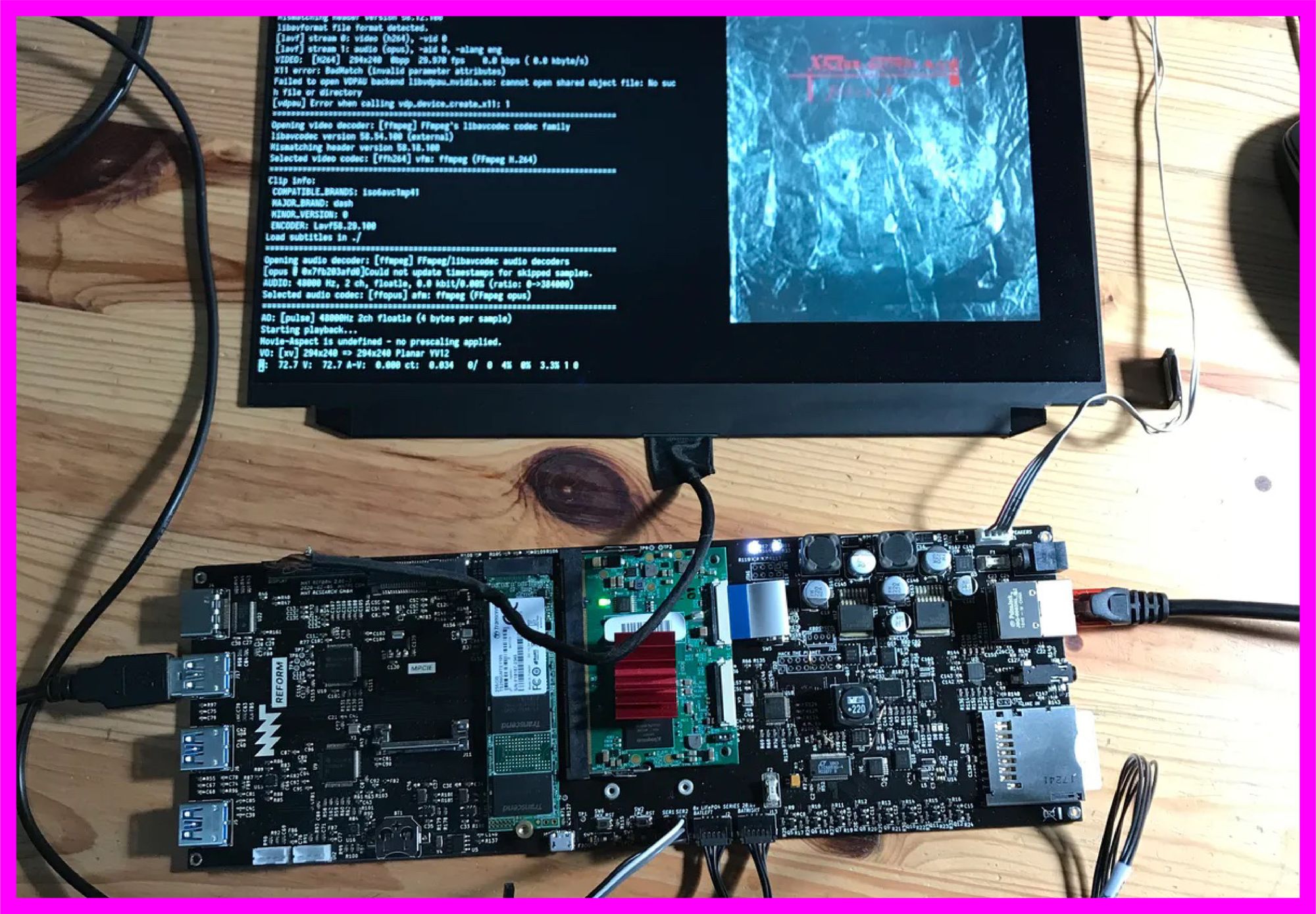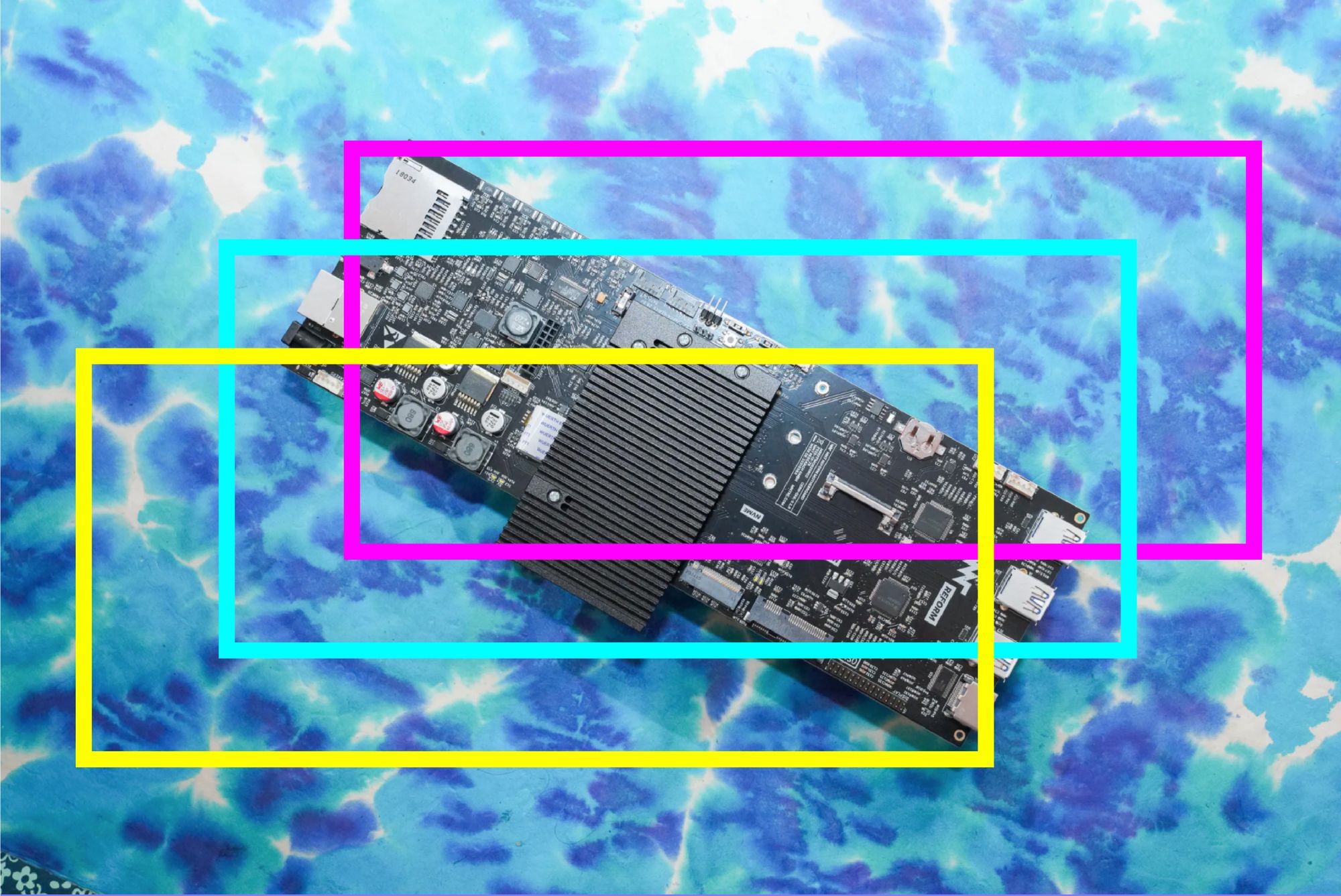Pocket Reform is developed as a modular, open-source mini computer with an Open Design approach. As computing is necessary almost every single moment of our lives, but most of the time we have no control over the devices themselves, Pocket Reform is designed openly to be upgradable and repairable by the user. The modularity of the device supports a longer lifespan than the one of other electronics where planned obsolescence is common. The open source aspect invites users to get creative to modify and build up on the hard- and software of Pocket Reform according to their needs. This approach enables a more responsible and independent way of production and consumption.
Where does innovation come from?

The open source movement is based on a radical retake on copyright law to create high quality hardware & software products whose use and development are guaranteed to the public. This means users can modify the products themselves and adapt them to their own needs. Open Source mainly refers to software whose source code is public and can be viewed, changed and used by third parties. Open Hardware or Open Source Hardware refers to the design specifications of a physical object. Open Source Hardware (OSH) is focused and clear as it is defined as “hardware whose design is made publicly available so that anyone can study, modify, distribute, make, and sell the design or hardware based on that design” (OSHWA, 2020). Both free and open-source software (FOSS) and open-source hardware are created by the open-source culture movement and can be summarised under the term Open Design.
FOSS vs. GAFAM
From the world of free/libre and open source software (FLOSS) we know that openness is socially and economically sensible. Far from being of interest mainly to hobbyists, open source software powers large parts of the internet’s backbone and is thus a big contributor to industry and infrastructure alike. (Bohn, Send & Biehr, 2021) Today Linux and thousands of other open source projects and open standards dominate the software landscape, supporting emerging technologies like artificial intelligence and edge computing. Opposed to them are the large corporations and platforms Google, Amazon, Facebook, Apple, Microsoft, (GAFAM) which virtually dominate the internet and drive its users into a dependency. The resulting de facto monopolies of GAFAM companies can be explained by three self-reinforcing effects (Bohn, Send & Biehr, 2021): First, a digital good can have enormous scaling effects. Once produced, it can be sold again and again without cost. Second, those who sell a digital good can integrate other goods or services, creating lock-in effects. Users naturally shy away from the costs of switching platforms once they have invested a lot of time or money in one platform. And thirdly, a growing number of users of a digital good often leads to network effects because these users can condition attractive complementary goods or become direct partners in the use of the focal good. But there are also successful business models which are Open Source. RedHat and Canonical which offer its software for free and charge enterprise users for technical support services. The Mozilla Corporation which earns its revenue from partnerships with companies such as Yahoo, Google and Amazon, which pay to be included as built-in search options in the Firefox browser. As well as MySQL which charges for enterprise-oriented, premium features that are not included in the software's basic version and also sell support services, to name a few.
Open Source powers innovation

Rapid technological innovation works best when data is easily accessible and not locked into proprietary solutions. Open source is now fundamental to most technology stacks: 90% of IT leaders are using enterprise open source, 87% see it as more secure or as secure as proprietary software and 79% expect their use of enterprise open source software for emerging technologies to increase over the next two years. (RedHat report 2021) There are numerous benefits to using enterprise open source software. For one, a commitment to open source brings transparency and collaboration improvements. Respondents also cited higher quality software, access to the latest innovations and improved security as being among the top benefits to adopting open source software.
Open source allows people to work together and create something anyone can access for free. Initially, companies were wary of using an open source database because they thought it was too risky, but today it’s fast, secure, and cost effective, making it an attractive choice for use in an enterprise. In fact, open source databases are now more popular than commercial databases. (DB-Engines 2021)
There is no innovation behind closed doors
While Open Source software is kind of established, Open Source hardware is an emerging field. As with open source software, the source code for open hardware as schematics, blueprints, logic designs, CAD drawings, files etc. is available for modification or improvement by anyone under permissible licences. It should be easily accessible and its components are preferably easily obtainable by anyone. Users with access to the tools to read and manipulate these source files can update and improve the code underlying the physical device. They can add features or fix bugs in the software and can modify the physical design of the object itself. Essentially, open hardware removes the usual barriers to the design and manufacture of physical goods; it gives as many people as possible the opportunity to construct, remix and share their knowledge of hardware design and function. One example how this collaborative approach powers innovation is the 3D printing community around the family of self-replicating rapid prototype 3D printers RepRap, whose technology is credited with radically lowering the cost of 3D printing and launching the entire desktop 3D printing market. (Pearce, 2017)
This has spawned dozens of new companies.

Open source hardware is not yet as successful and prominent as its software counterpart. The entry barriers are higher as well as development and production costs of hardware products are. However there is an enormous potential and a great opportunity in Open Source Hardware but it needs support from policy makers and alternative types of funding to be proactive about socially desirable results of hardware development in the future.
Sources:
Bohn, Stephan, Send, Hendrik, & Bihr, Peter (2021):Free technologies for the whole world to use – why open source hardware is in the public interest. https://doi.org/10.5281/zenodo.4436475
DB-Engines (2021): Popularity of open source DBMS versus commercial DBMS. Accessed July 30st 2021 on https://db-engines.com/en/ranking_osvsc
Jones, R. Haufe, P. and Sells, E. (2001): Reprap – The self replicating rapid prototyper. Robotica 29(1): 177–191, DOI:https://doi.org/10.1017/S026357471000069X
OSHWA (2020): Open Source Hardware (OSHW) Statement of Principles 1.0. Accessed July 30st 2021 on https://www.oshwa.org/definition/
Pearce, J.M. (2017): Emerging Business Models for Open Source Hardware. Journal of Open Hardware, 1(1): 2, pp. 1–14, DOI: https://doi.org/10.5334/joh.4
RedHat (2021): The State of Enterprise Open Source A Red Hat® Report. Accessed July 30st 2021 https://www.redhat.com/en/enterprise-open-source-report/2021
Sells, E., Smith, Z., Bailard, S., Bowyer, A., & Olliver, V. (2009). RepRap: The Replicating Rapid Prototyper - maximizing customizability by breeding the means of production. In F. T. Piller, & M. M. Tseng (Eds.), Handbook of Research in Mass Customization and Personalization (Vol. 1, pp. 568-580).
